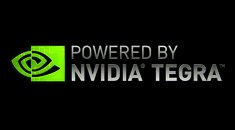Thursday, October 20th 2016

NVIDIA Claws Back Console Chips Business: Nintendo Switch Announced
After months of speculation, the lid is off Nintendo's "NX" project, with the company finally announcing today its much-awaited games console, the Nintendo Switch. With an expected release slated for March 2017, the console blurs the line between a games console and a handheld device, by making use of a docking station which will allow it to connect to a television, much like a traditional games console, while instantly entering a so called "portable mode" when it is undocked. As both a console and a portable device, the Nintendo Switch will use cartridges known as Game Cards, displaying games in a "high definition display" embedded on the console while on the go, with two detachable Joy-Con controllers stepping in as input devices.
For PC hardware enthusiasts, that may not be all too interesting. What is arguably more interesting is that this games console will make use of NVIDIA hardware: most notably, a custom Tegra processor is the one pulling out all of the console's processing needs, with the graphics being served by what the company calls "the same architecture as the world's top-performing GeForce gaming graphics cards."According to an NVIDIA blog post, the Nintendo Switch's gaming experience is supported not only by custom hardware design with its Tegra chip, but also by leveraging "fully custom software", including "a revamped physics engine, new libraries, advanced game tools and libraries." According to NVIDIA, new gaming APIs were created so as to fully harness the Tegra processor's performance, with their newest API, NVN, being built specifically to bring lightweight, fast gaming to the masses. The console also features hardware-accelerated video playback, as well as custom software for audio effects and rendering. All of this is delivered through a custom operating system, devised for full system integration with the GPU in a bid to increase both performance and efficiency.
After having successfully embedded their technology in Microsoft's XBOX One and Sony's PS4 and upcoming PS4 Pro, as well as the troubled Nintendo Wii U, AMD had effectively achieved full control of the console gaming ecosystem (not counting the many Android systems in the same vein, such as the OUYA, for example). This design win by NVIDIA may come as a surprise, after a company representative's past remarks regarding console's design wins resulted in razor-thin margins, which was purportedly the reason NVIDIA chose not to pursue the XBOX ONE, PS4 or Wii U designs with their own technology. One could however argue that AMD's IP portfolio was better suited for any one of those consoles, due to the company also being able to develop x86-x64 CPUs. At the same time, it can also be argued that NVIDIA's own product line is, in this case, the best match for the Switch's design philosophy, considering that the GPU technology integrated within the custom Tegra chip is almost certainly more energy efficient than AMD's current offerings (considering, of course, NVIDIA's Pascal undisputed energy efficiency over AMD's latest GCN implementation). All things considered, though, it does seem like AMD still has control of the living room - at least when it comes to their respective implementation's power levels and PC-relevant characteristics.
Sources:
NVIDIABlogs, Nintendo Switch
For PC hardware enthusiasts, that may not be all too interesting. What is arguably more interesting is that this games console will make use of NVIDIA hardware: most notably, a custom Tegra processor is the one pulling out all of the console's processing needs, with the graphics being served by what the company calls "the same architecture as the world's top-performing GeForce gaming graphics cards."According to an NVIDIA blog post, the Nintendo Switch's gaming experience is supported not only by custom hardware design with its Tegra chip, but also by leveraging "fully custom software", including "a revamped physics engine, new libraries, advanced game tools and libraries." According to NVIDIA, new gaming APIs were created so as to fully harness the Tegra processor's performance, with their newest API, NVN, being built specifically to bring lightweight, fast gaming to the masses. The console also features hardware-accelerated video playback, as well as custom software for audio effects and rendering. All of this is delivered through a custom operating system, devised for full system integration with the GPU in a bid to increase both performance and efficiency.
After having successfully embedded their technology in Microsoft's XBOX One and Sony's PS4 and upcoming PS4 Pro, as well as the troubled Nintendo Wii U, AMD had effectively achieved full control of the console gaming ecosystem (not counting the many Android systems in the same vein, such as the OUYA, for example). This design win by NVIDIA may come as a surprise, after a company representative's past remarks regarding console's design wins resulted in razor-thin margins, which was purportedly the reason NVIDIA chose not to pursue the XBOX ONE, PS4 or Wii U designs with their own technology. One could however argue that AMD's IP portfolio was better suited for any one of those consoles, due to the company also being able to develop x86-x64 CPUs. At the same time, it can also be argued that NVIDIA's own product line is, in this case, the best match for the Switch's design philosophy, considering that the GPU technology integrated within the custom Tegra chip is almost certainly more energy efficient than AMD's current offerings (considering, of course, NVIDIA's Pascal undisputed energy efficiency over AMD's latest GCN implementation). All things considered, though, it does seem like AMD still has control of the living room - at least when it comes to their respective implementation's power levels and PC-relevant characteristics.




54 Comments on NVIDIA Claws Back Console Chips Business: Nintendo Switch Announced
Good luck. What happened to a real console?
Anywho, pretty cool I guess, hope those rendered images are not final though I mean, what is up with that "D-pad" being 4 buttons... come on nintendo you have a damn patent on the traditional D-pad, use that thing!
What kind of success did the Wii U have ?
Those screens of multiple people using it with the tiny controllers make me think. "Just get a bigger tablet" or probably for the price of one of these each person can get their own tablet.
Dunno, friend and I are arguing over how well the switch will do. I still believe its going to come down to not only its performance, but if Nintendo can actually amass a decent game library this go round. They can only rely on Mario and Zelda for so long...
There are games that shine on the WiiU, but there are also games that flop hard, and unfortunately the majority of designers aren't interested in another system architecture to code for with its odd chips, file system and OS. With other consoles and PC being on a common platform, unless they are going to Android, I believe this will flop harder than a diabetic at an ice cream eating contest.
en.wikipedia.org/wiki/List_of_best-selling_game_consoles
I think the main reason is that it is so under powered that 3rd party publishers shunned it. The Nintendo exclusives did pretty good though.
Yeeeah. Wii U sucked, not the console, but its game selection. Let's hope this one does better, game selection wise. Enough with Super Mario and Zelda crap. Bring on some new stuff, Nintendo.
This could turn out to be Vita MK 2.
A9 ARM CPU's alone would be better than a walled garden of Tegra, they could port Android onto it quickly, add a piece of hardware for security, allow the games from android, eliminate the android tablet market for holiday sales by allowing a gamepad to function as a tablet as well, and connect and play platform specific games.
The hardware progression is too fast for consoles now. Console used to be a gaming machine you could have for 5 ~ 10 years without further investment. Now, consoles have lifepan of 2 years or so.
But it doesnt look like another Wii success with that exotic hard and software concept, expensive games because of proprietary memory cards just for DRM purposes and big and bulky design which looks rather heavy.
But I guess their ultra loyal fanbase will buy anything that has a Metroid or Zelda logo on it...
Sony uses nVidia...nVidia is a dick. Sony dumps them next gen.
Nintendo uses nVidia...
Sorry, nVidia doesn't have a good track record with the console business. Nintendo is going to find out the hard way why no one uses nVidia in their hardware.
Custom OS they speak of should be some linux/android spinoff so it should be open, but with better system gpu integration ... that reads, they'll finally make effort for drivers on a linux/android branch ... no wait, this is nintendo, nothing is open ... what kind of os is this?
I wonder how will it be with backward compatibility - if You have some games from Wii/Wii U linked to Your account, will You be able to install them on Switch? I hope so. Using accessories from previous consoles would also be nice...
Good to see Nintendo back in the game either way.
I see no problems with this. Did anyone expect a XB1/PS4 killer, or even something in the same ballpark as them? Give it good enough games and a good battery life and a good price and it'll sell.
firstly, it is a completely different type of architecture. Unless they emulate the wii u hardware, in which case the games will play like crap.
Secondly, nintendo would rather you buy the remake of zelda/mario/cart games again. thats their modus operandi: selling rehash after rehash after rehash of the same games.
thirdly: seems like they double downed on the lame clunky/cumbersome tablet/controller thing. the MAIN reason i had no interest in the wii u.
fourth: seems like they 'borrowed' the concept from another company: morphus x300